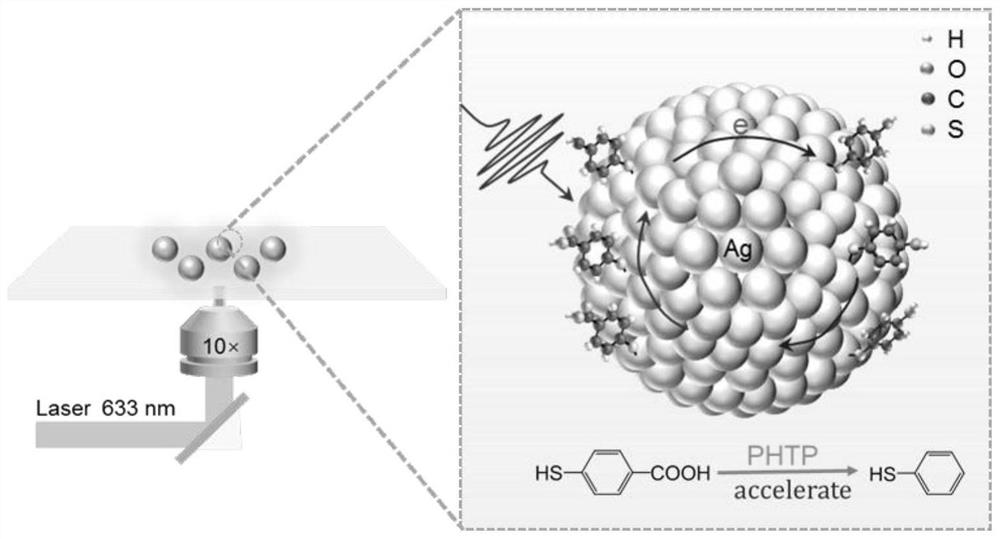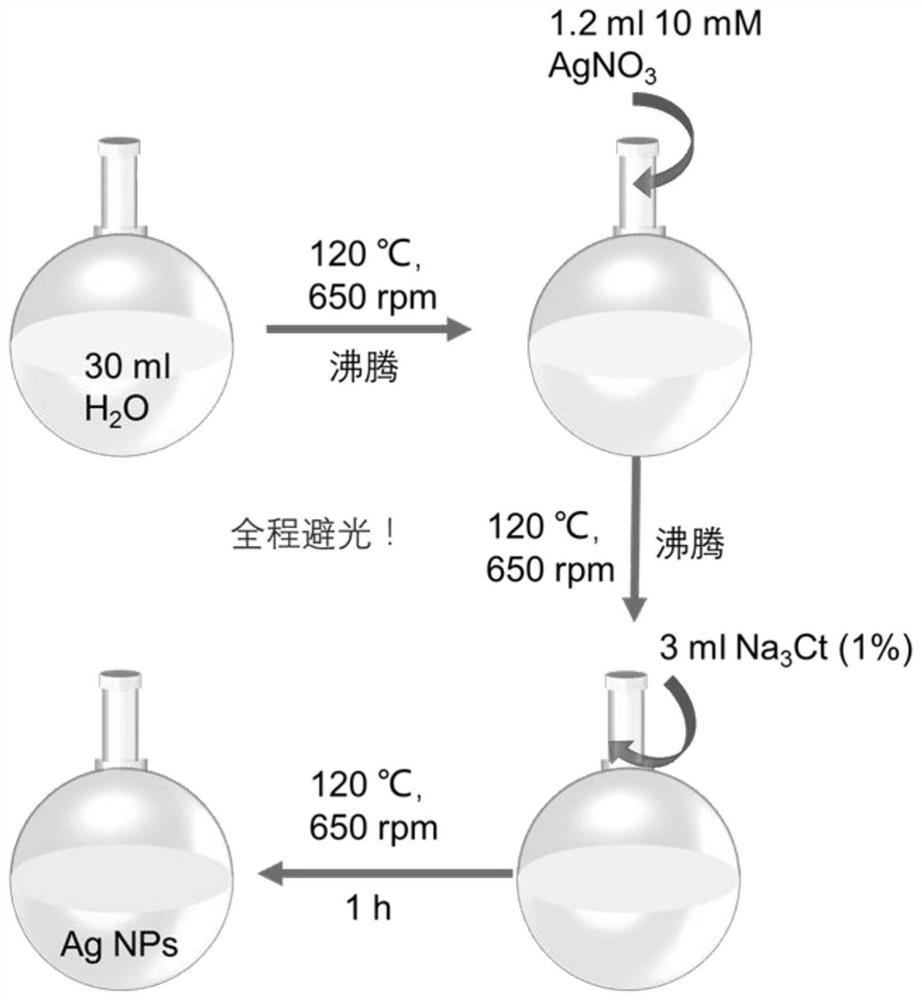Simple method for enhancing plasmon-driven photochemical decarboxylation reaction
A plasmonic and decarboxylation technology, applied in organic chemistry, energy wastewater treatment, thioether preparation, etc., can solve the problem of short lifespan of plasma metal excited hot carriers, and achieve the promotion of photochemical reaction and enhanced photoreduction. effect of reaction
- Summary
- Abstract
- Description
- Claims
- Application Information
AI Technical Summary
Problems solved by technology
Method used
Image
Examples
Embodiment 1
[0027] Example 1. Method principle of asymmetric co-adsorption of p-hydroxythiophenol with electron-withdrawing group to enhance the plasmon-mediated deacidification reaction of p-mercaptobenzoic acid.
[0028] The push-pull electron groups have the mutual attraction of hot electrons. From the perspective of quantum theory, in theory, when an organic molecule has an electron-withdrawing group, it can induce the transfer of electrons, and when an organic molecule has an electron-pushing group, it can inhibit the transfer of electrons (promoting the transfer of holes, due to the average freedom of holes). The distance is very short, so it mainly shows the behavior of negative electric repulsion). And, unlike the band structure of common semiconductors, molecules can be tuned by adding (or removing) substituents or changing substituents. For example, when an organic molecule is changed to change the chargeability of a substituent, the chargeability of the molecule will change. ...
Embodiment 2
[0029] Example 2. Preparation of plasma metal. First use the method of sodium citrate reduction, as attached figure 2 shown. The detailed steps are as follows: the whole experiment is carried out in the dark. First, 30 ml of water was added to a two-necked flask with a capacity of 50 ml, and then the constant temperature magnetic stirrer was adjusted to 120° C. and the rotational speed of 650 rpm for heating. In addition, open the condensate water valve to pass into the cold energy pipe. When the water boils, quickly inject 3ml of 10mM AgNO in the above configuration 3Aqueous solution, quickly cover with tin foil and wait for the second to boil. Immediately after the sub-boiling injection of 1.2 ml of 1% Na by mass 3 Ct aqueous solution. Reaction for 1h. After 1 h, the temperature was turned off, the stirring was continued to be turned on, and the aging was performed in the dark for 40 min.
[0030] The slides were then surface modified (polyvinylpropanolone PVP) to i...
Embodiment 3
[0034] The adsorbed silver nanoparticles are soaked in a mixed ethanol solution of p-fluorothiophenol and p-mercaptobenzoic acid (≥12h), and the two are phase-separated to form the desired asymmetric structure. as attached Image 6 As shown in a, through the contact angle test, it was found that the contact angle of the surface increased from 9° to 38°. In addition, in order to further prove that the asymmetric structure was constructed by phase separation, by placing the asymmetrically adsorbed silver nanoparticles in an oil-water solution, it was found that there was still a layer of silver nanoparticles at the water-oil interface after vibration, which further proved the asymmetric adsorption. Image 6 b shown.
PUM
| Property | Measurement | Unit |
|---|---|---|
| diameter | aaaaa | aaaaa |
Abstract
Description
Claims
Application Information
 Login to View More
Login to View More - R&D
- Intellectual Property
- Life Sciences
- Materials
- Tech Scout
- Unparalleled Data Quality
- Higher Quality Content
- 60% Fewer Hallucinations
Browse by: Latest US Patents, China's latest patents, Technical Efficacy Thesaurus, Application Domain, Technology Topic, Popular Technical Reports.
© 2025 PatSnap. All rights reserved.Legal|Privacy policy|Modern Slavery Act Transparency Statement|Sitemap|About US| Contact US: help@patsnap.com



